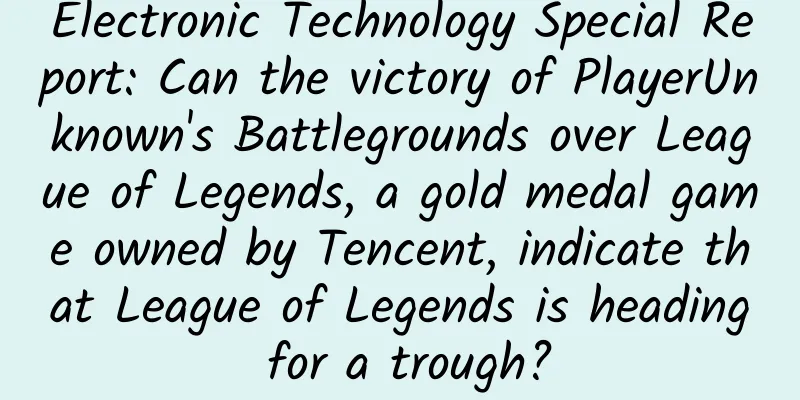Captain Da Shanzhaowan's Notes | Deep Sea Part 2

|
About the Mistakes of Hydrothermal Fluids During a deep-sea exploration in 1977, the researchers’ geologist content reached 100%, but they unexpectedly discovered hydrothermal biota; in 1979, biologists looking for hydrothermal biota discovered hydrothermal vents and black chimneys instead. This process was full of contrasts and drama. However, what is more interesting is that most of the research in the following forty years has also focused on the biota. Discovery of giant tube worms Clusters of red dot the vicinity of hydrothermal vents. They are not plants, nor are they hydrothermal saliva, but rather the gill-like feathers of tube worms. Tube worms are the largest species of deep-sea hydrothermal animals and can grow up to 1.5 meters. However, they have no mouth, no intestine, and no digestive organs, which is very strange. This amazing animal actually relies on a stomach full of symbiotic bacteria to survive. It uses its gill-like feathers to absorb the elements needed by the bacteria, and then asks the bacteria to synthesize organic matter. This discovery finally solved the scientists' doubts about hydrothermal organisms. The question of how they survive without light and nutrients was cleared up. Pompeii worms that take advantage of others Not all bacteria grow inside worms; there are also symbiotic relationships in which bacteria grow outside the worms. Pompeii worm is such a kind of worm, and it even grows on black chimneys, showing its friendship with bacteria that goes through thick and thin. The Pompeii worm is only as big as a primary school student's ruler, but it dares to make black chimneys its home and grow together with them. According to legend, the ancient city of Pompeii disappeared in a volcanic eruption, and this worm lives in the black chimneys and watches the spewing mineral debris, as if it were living in Pompeii, hence the name "Pompeii worm." Deep Sea Coral Forest Growth Manual There is no light in the deep sea, so photosynthesis cannot take place, and corals have to rely on themselves for everything. It needs to find a hard substrate, suitable seawater and sufficient food to successfully evolve into a coral forest. Fortunately, it is not very picky, as long as it is hard rock, anything will do, but sea water is closely related to food, so it needs to be selective. Only when the terrain is undulating will there be active water flow to bring food. Therefore, as long as the corals grow in the direction of the water flow, they can intercept food. In order to obtain more food, corals often grow into various showy shapes, not for beauty, but for survival. The trenches are the brain circuits of the Earth The deepest point on the earth's surface is located at the southern end of the Mariana Trench, called "Challenger Deep", with a depth of 11,000 meters. Many things that humans have not yet figured out are there, silently. Scientists have visited it many times in order to figure out the mysteries. But the trenches still hide a lot of unknowns, like the folds of nature's memory, like the brain circuits of the earth, recording little-known stories. Digging holes every day for fifty years Humans are born hole-diggers. They have never stopped exploring the underground. They even thought about drilling through the crust to see the true face of the mantle. This plan was called the "Moho Project" and was proposed by American scientists and supported by the government. It failed a few years later due to financial difficulties. Although the goal was not achieved, it inspired the ocean drilling plan. The idea of ocean drilling is more direct: the bedrock of the earth's crust can already explain the structure and origin of the deep ocean, so there is no need to challenge the deeper mantle. Over the past fifty years, scientific research vessels from various countries have drilled countless holes in the ocean and retrieved 340,000 meters of rock cores, which is a very valuable research material. After all, drilling holes is easy but coring is difficult. Different degrees of hardness of rocks are two different challenges: soft rocks need to be taken out of the thick mud layers on the seabed without stirring the original samples; hard rocks need to attack the extremely hard crystalline rocks deep in the crust at high temperature and high pressure. In any case, it is a difficult and important way to coring. Disaster Brothers Earthquake and Tsunami Plate movement causes changes in the ocean and land, especially in the areas where plates meet, where strong movement can cause disasters such as earthquakes. The edge of the Pacific Plate is a subduction zone, where subduction movement causes a large number of earthquakes. Earthquakes here account for about 80% of the total number of earthquakes in the world. In the ocean, tsunamis are another disaster that often accompanies earthquakes. Although extremely large earthquakes and super tsunamis are rare, they cause huge damage and are mostly related to the ocean. In order to understand the causes of the two disasters and reduce the damage, researchers dived into the deep sea where the earthquake occurred to collect a lot of information. The study found that this powerful energy comes from the energy of plate movement being transmitted upward, but there is no conclusion yet on what exactly is happening. At present, in order to establish a disaster early warning mechanism, scientists have conducted in-depth detection in earthquake-prone zones and established various observation networks. Learning from the earth's changes is our only way to proactively respond to disasters. Dangerous volcanoes also have children There are about 100,000 seamounts that are over 1,000 meters tall, and they all have one common cause: volcanoes. Fortunately, most of them are not active volcanoes and no longer have the ability to cause disasters. Only the eruption of active volcanoes will cause disasters. But the scary thing is that the eruption of active volcanoes will form volcanic islands, which retain their violent genes and can still erupt again to form new volcanoes. The Krakatoa volcano in the South China Sea is a typical example of a volcano that leaves children behind after an eruption. Back in 1883, the Krakatoa volcano spewed volcanic ash to an altitude of 80,000 meters in anger, and at the same time, it set off a 40-meter-high tsunami. This evil-doing not only caused a large number of casualties, but also destroyed two-thirds of the volcanic island. However, this is not the end. In 1927, Krakatoa volcano erupted again, creating a small volcanic island, known as "Son of Krakatoa". Such examples are everywhere in volcanic seismic belts, that is, at the junction of plates, and basically all of them are caused by subduction zone movement. The power of the sea is unfathomable In addition to earthquakes and volcanoes, there is also a terrible marine disaster called "undersea landslide". It is very different from the landslide disaster on land. The deep sea gives it a layer of horror because its characteristics are: huge scale, far-reaching impact, and long time. Such terrifying characteristics are fully mastered by it, and its identity as the disaster demon is undoubtedly. The most famous submarine landslide is the Storga landslide, which occurred on the coast of Norway and caused a giant landslide of 95,000 square kilometers, which is an area as large as Zhejiang Province. Its volume is enough to cover the Zhejiang Province with a thickness of 30 meters. It can also trigger tsunamis. The tsunami formed will have a larger impact range than the landslide, and its destructive power can be seen from this. How rampant is the metal in the deep sea? The Pacific Ocean floor is a treasure trove, with trillions of tons of manganese nodules available for mining, and the growth rate far exceeds the mining rate, so it can be said that the resources are inexhaustible. This is the content of the book "Mineral Resources of the Ocean", which happened to be the book that triggered a craze for seabed mining in various countries. The minerals buried in the deep sea are like glittering gold, attracting countless ships to "bend" and drift for it. However, even in the golden age, only one consortium pumped up 800 tons of manganese nodules. What is even more regrettable is the ending. They lost the mining system, and the hard work turned into nothing. We cannot mine deep-sea polymetallic ores whenever we want, as this involves the protection of marine ecology, so improving technology to reduce the impact on the ocean is undoubtedly difficult. Fortunately, there are three types of deep-sea polymetallic ores: polymetallic nodules, cobalt-rich crusts, and metal sulfides, all of which are very important mineral resources. Polymetallic nodules are spread on the seabed. Whether you mine them or not, they are there. The only difficulty in mining them is the great depth. Cobalt-rich crusts grow on seamounts and are valuable, but they are thin-skinned, with each rock surface only a few centimeters thick, making mining difficult. Metal sulfide is probably the most easily exploited metal ore among the three major minerals. It is very common in hydrothermal fluids and the estimated reserves are up to 600 million tons, with good prospects. Currently, these metal mines are looking up from the bottom of the sea, and we humans can dive into their sight, but the ocean is ultimately a barrier, and it is not easy to salvage treasures in the deep sea. Conclusion The deep sea is full of the Earth's genes, which need to be explored and learned again and again. We need to calm down and seek. Although we live above sea level now, our history may be buried in the deep sea. Diving down and penetrating the tranquil sea can not only understand the Earth's past, but also step into the dream of the future. The more we understand the deep sea, the more we understand the Earth, and the more we understand our future trajectory. Diving down, we can pursue the light of miracles in the dark place. For reprinting or business cooperation, please scan the QR code to contact us! |
<<: Heavy rain in the south and cold weather in the north, what’s wrong with the weather in May?
>>: A small step towards lunar colonization: Scientists grow plants in lunar soil for the first time
Recommend
WeChat releases announcement on external link management regulation adjustment: one-on-one chats can access external links
Not long ago, the Ministry of Industry and Inform...
Analysis of the planning of a single product live broadcast room
A classmate asked me about the gameplay of "...
How to write a hot-selling product details page or product introduction?
Product introduction and product details are task...
5 important updates of iOS 14.5: embodying "user sovereignty"
1. Block app tracking At its press conference on ...
Land→Ocean: How powerful are these hard-core “magic tools” that aid oil and gas exploration?
As early as the 11th century Shen Kuo, a scientis...
The download cost is 5.6 cents? This is how you promote and attract traffic on Zhihu!
My first impression of Zhihu came from a question...
How did “Her Community” win tens of millions of users in four months?
Anti-counterfeiting startups have now become an e...
Is it possible to know everyone in the world? Is this theory really so amazing?
Audit expert: Chen Mingxin National Level 2 Psych...
Will our poop pollute rivers, lakes and seas?
People have to eat grains and cereals to get rid ...
WeChat is working hard to update three major system update content highlights
The latest WeChat has started to make progress an...
User pyramid model: Zhihu promotion case analysis
As the proposer of the user pyramid model, Lei Le...
Have you ever seen the sun with a halo? Please save these beautiful photos of the sun halo →
Recently, solar halos have appeared in many parts...
How much does it cost to develop a mini program?
The editor still says the same things as before. ...
In fact, choosing competing products is not that simple!
I don’t know since when the word “competitor” has...
400 phone can select the number first and then activate it
When we choose a number, we always hope to have b...









